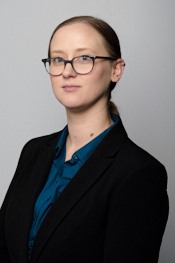Program Information
Cherenkov Imaging Method Allows for Stricter Commissioning Guidelines in Total Skin Electron Therapy
J Andreozzi1*, K Mooney2 , P Bruza1 , J Cammin3 , L Jarvis4,5 , D Gladstone1,4,5 , H Li3 , B Pogue1,4 , (1) Thayer School of Engineering, Dartmouth College, Hanover, NH, (2) Thomas Jefferson University, Philadelphia, PA, (3) Washington University School of Medicine, St. Louis, MO, (4) Geisel School of Medicine at Dartmouth, Lebanon, NH, (5) Norris Cotton Cancer Center, Lebanon, NH
Presentations
TU-FG-205-4 (Tuesday, August 1, 2017) 1:45 PM - 3:45 PM Room: 205
Purpose: To investigate stricter commissioning criteria regarding treatment field homogeneity for dual-field technique total skin electron therapy (TSET) using an enhanced Cherenkov imaging method with optimization metric based on overall variation, effective field height, width, and flatness.
Methods: Cherenkov imaging was used to capture 42 treatment fields at 1° increments (240°-260° and 280°-300°) on a 1.2mx2.2mx1.2cm polyethylene sheet at two institutions. The sheet was placed in the treatment plane at source to surface distance (SSD) of 300cm. Each machine was tested for 6MeV electrons, and one machine assessed for 9MeV electrons. Composite images of the effective treatment field were generated by summing all unique pairs of possible treatment angles, and the region of interest (ROI) was selected based on a threshold of 90% maximum dose. A custom optimization coefficient metric was calculated for the 24 instances of least coefficient of variation (COV), which equally weights COV, height and width at midline, and central horizontal and vertical flatness. The known dimensions of the polyethylene sheet were used to approximate physical ROI size as 4.2pixels/cm and relate to commissioning criteria.
Results: At institution A, gantry angles 245° and 287° (270°-25°, 270°+17°) produced an approximately 64% larger treatment field than the standard 250° and 290° pair for 6MeV beams. For 9MeV beams, 245° and 284° (270°-25°, 270°+14°) yielded a 21% larger area. At institution B, symmetric angle pair 251.5° and 288.5° (270°-18.5°, 270°+18.5°) produced the best TSET field.
Conclusion: The new optimization metric performs better than coefficient of variation alone in selecting a customized geometry for a given treatment room for both 6MeV and 9MeV TSET. An asymmetric angle pair was sometimes superior to a symmetric angle pair to provide the most homogeneous coverage in an area encompassing the 160cmx80cm region recommended by TG30 Report 23.
Funding Support, Disclosures, and Conflict of Interest: This work has been funded by NIH grants F31CA192473 and R01EB023909, as well as DoD grant W81XWH-16-1-0004. B. Pogue is founder and president of DoseOptics LLC developing Cherenkov imaging systems, however this work was not supported by DoseOptics in any way.
Contact Email:
